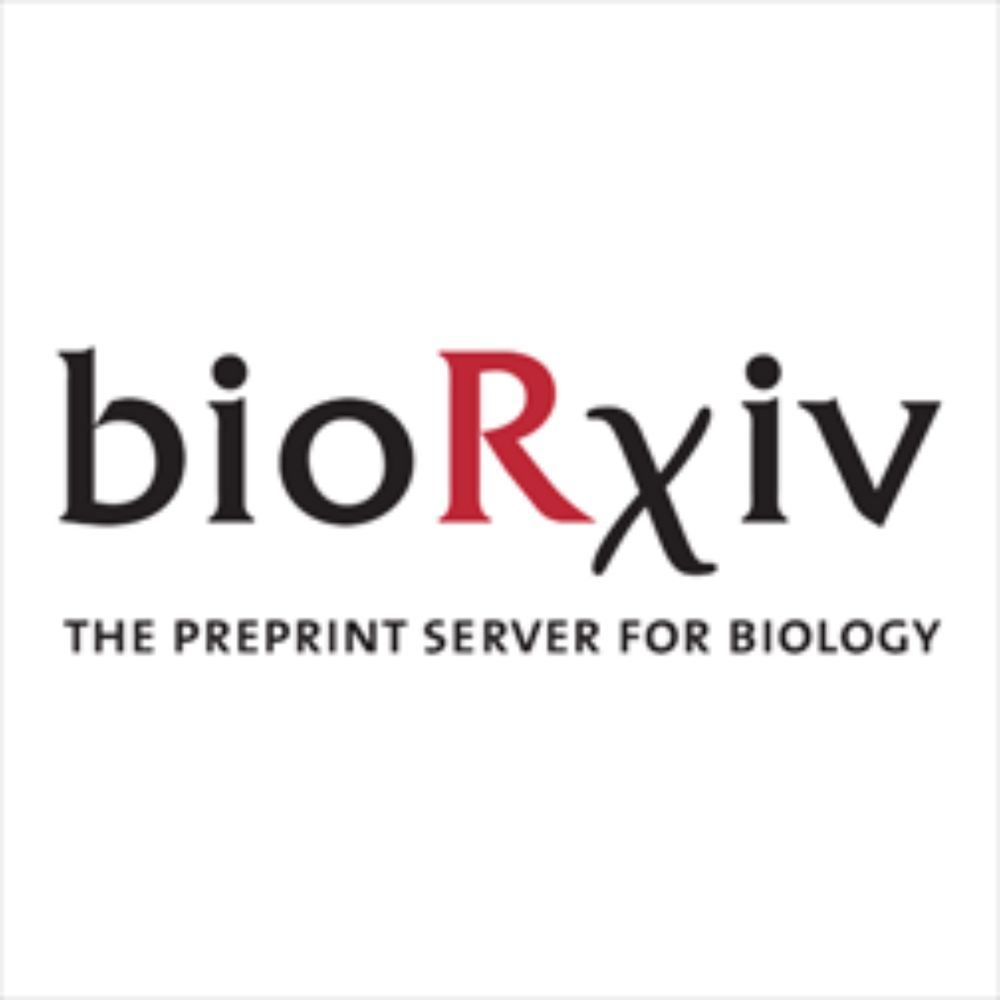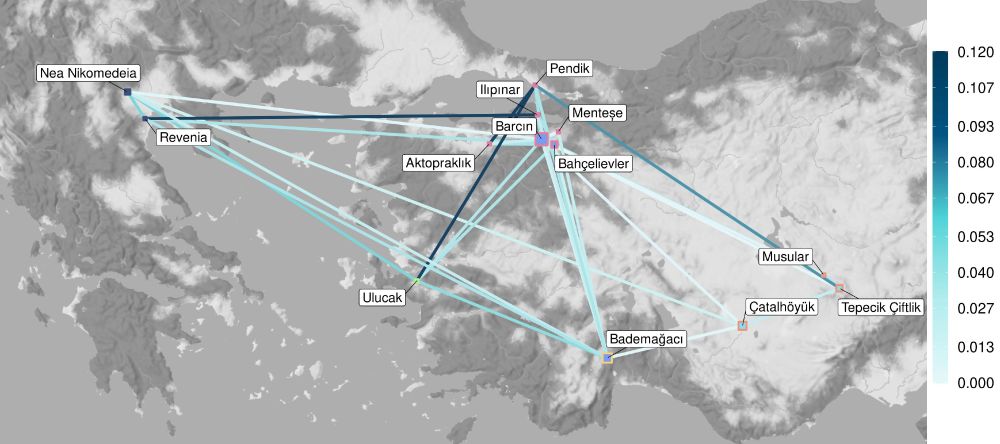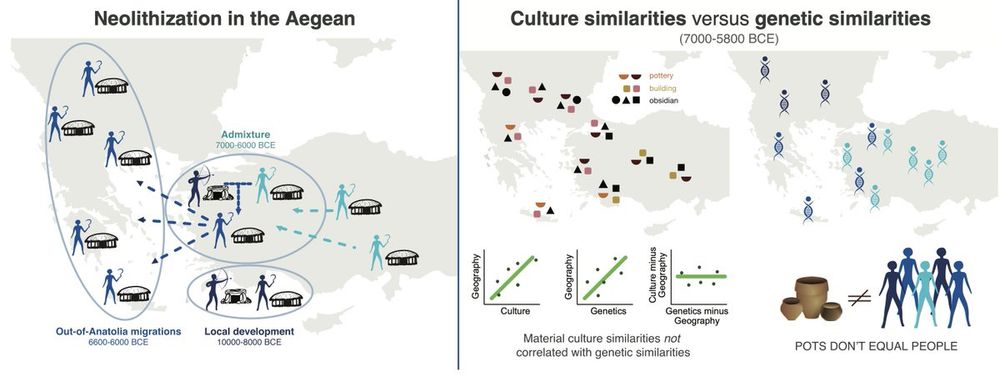
Labımızın mezunu @meerf.bsky.social, Gene Forum 2025 kapsamında düzenlenen Artur Lind Bursu video yarışmasında Büyük Ödül’ü kazandı! 🍻🥳
Tema: 2035’te Bilimde İnsan ve Yapay Zeka
🎬 Kazanan video “The Code”u izleyin: www.youtube.com/watch?v=gyKn...
@compevohumang.bsky.social
Comparative and Evolutionary Biology Lab at METU - Human Molecular Anthropology Lab at Hacettepe #ancientDNA #HumanHistory Turkish & English

Labımızın mezunu @meerf.bsky.social, Gene Forum 2025 kapsamında düzenlenen Artur Lind Bursu video yarışmasında Büyük Ödül’ü kazandı! 🍻🥳
Tema: 2035’te Bilimde İnsan ve Yapay Zeka
🎬 Kazanan video “The Code”u izleyin: www.youtube.com/watch?v=gyKn...

🏺🧪 Our alumni @meerf.bsky.social has won the Grand Prize in the Artur Lind Scholarship video competition at Gene Forum 2025!
🎥 Theme: Human and Artificial Intelligence in Science in 2035
Watch the award-winning video The Code: www.youtube.com/watch?v=gyKn...
I will be presenting my poster: “The Population Genetic History of the Hittite Capital Hattusa” at #ESEB2025
📍Poster #273
If you’re around, please come by, ask questions or have a chat, and let’s talk ancient DNA & population genetics!
Amazing #eseb2025 talk!
21.08.2025 12:48 — 👍 6 🔁 2 💬 0 📌 0
At #ESEB2025, Exploring Female Lineages & Mortuary Practices in Neolithic Çatalhöyük with insights from genomic & archaeological data.
Don't miss Eren Yüncü’s presentation at 02:00 p.m.!
Siz yine de okumak isterseniz, ayrıntılar burada 👩🏻💻🤨🤓
bsky.app/profile/comp...

💀+🧬+🤖 = 🎬🔥
Makalemiz artık sadece okunmuyor, izleniyor! Kurgu değil, gerçek bilim 😍😎
Teşekkürler Hacettepe ❤️
@science.org
👇 Yapay zeka animasyonumuza acil bakın:
www.youtube.com/watch?v=j3_C...

Our genetic kinship estimation tool using deep learning is just out:
onlinelibrary.wiley.com/doi/10.1111/...
Our models trained on simulated data work effectively on real data from diverse backgrounds and often better than available tools. Congratulations @meerf.bsky.social and team!
Check this out 👇
🏺🧪

2) They assembled genomes of 65 individuals to near completion—including centromeres and the MHC—enabling accurate detection of 26,115 structural variants per genome for improved disease studies. www.nature.com/articles/s41...
25.07.2025 13:55 — 👍 0 🔁 0 💬 0 📌 0
1) They sequenced 1,019 genomes from the 1kGP cohort with long reads. Using linear and graph-based analyses, we uncovered SVs down to low allele frequencies—advancing beyond short-read population surveys. www.nature.com/articles/s41...
25.07.2025 13:55 — 👍 1 🔁 0 💬 1 📌 0🚨 Big news! Our group member @asoylev.bsky.social co-authored two groundbreaking papers in @nature.com! 🧬
Here’s what they achieved 👇

New preprint alert 🚨
The tiniest bone in the human body appears to have the best DNA preservation: "The mini yet mighty staples"
www.biorxiv.org/content/10.1...

neolitik dönemde tarımın kulaktan kulağa yayılması
@eksisozluk.com
eksisozluk.com/neolitik-don...
See the first author @dilekopter.bsky.social's post:
bsky.app/profile/dile...

📜 This thread summarizes findings from our paper published yesterday in Science.
🔗 You can read the paper here: www.science.org/doi/10.1126/...
This study highlights the remarkable adaptability and cultural creativity of Neolithic communities.
Change doesn’t always require crisis or mass migration.

The takeaway:
Ideas sometimes travel faster and further than people.
The pot arrives, but the potter stays. Farming can spread like gossip — from neighbor to neighbor.
Led by researchers from METU and Hacettepe, in an international collaboration, this study integrates ancient DNA with archaeology.
📊 Pottery types, stone tool morphologies, and architectural features were quantified and directly compared to the genetic data.
This pattern is quite different from the farming expansion into Europe, which was largely driven by migration.
➡️ In Anatolia, farming spread sometimes with people, sometimes with ideas, and often with a mix of both.
In other words, people stayed physically in place, but their culture changed dramatically.
Farming spread not through genetic mixing but through cultural transformation.
But the archaeological record tells a different story:
🏺 Pottery, tools, and architecture change rapidly. People move from caves into houses, adopt new technologies, and begin farming.

Genetic analyses reveal that the genomes of individuals living in western Anatolia 9,000 years ago show strong continuity with earlier local hunter-gatherers.
➡️ This suggests there were no large-scale migrations.
This study is the first to combine genetic and archaeological data at scale and systematically to understand how farming spread from the Fertile Crescent into Anatolia and the Aegean.
28.06.2025 19:32 — 👍 4 🔁 0 💬 1 📌 0
🌾 Agriculture didn’t always spread with mobility of people.
New ancient DNA research shows that in western Anatolia, while communities stayed put, farming and village life spread through the movement of ideas and practices.

📜 Bu zincir, önceki gün Science’ta yayımlanan makalemizin bulgularını özetliyor.
🔗 Makale ve detaylar burada: www.science.org/doi/10.1126/...
Bu çalışma, Neolitik dönem insanlarının adaptasyon kabiliyetini ve kültürel yaratıcılığını gösteriyor.
Değişim için her zaman bir kriz ya da büyük göç gerekmiyor.

Sonuç:
Fikirler bazen insanlardan daha hızlı ve daha uzağa gider.
Çömlek geliyor ama insanlar aynı kalıyor. Tarım, kulaktan kulağa komşudan görülen bir yenilik olarak da yayılabiliyor.
ODTÜ ve Hacettepe'den araştırmacıların öncülüğünde uluslararası işbirliği ile yapılan çalışma, antik DNA sonuçlarını arkeolojik verilerle entegre etti.
📊 Seramik tipleri, taş alet morfolojileri ve mimari özellikler sayısallaştırıldı ve genetikle karşılaştırıldı.
Bu, daha önce Avrupa’ya doğru tarımın göç yoluyla yayıldığını gösteren çalışmalardan farklı.
➡️ Anadolu’da tarım bazen göçle, bazen bilgiyle, bazen ikisinin karışımıyla yayılıyor.